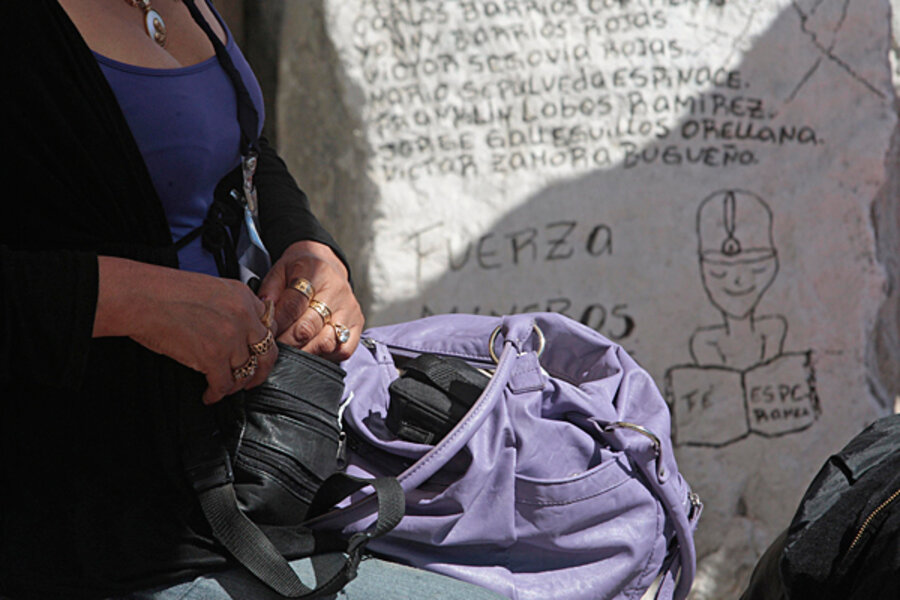After Chile miners rescue, will jobs be waiting for them?
Loading...
| Caldera, Chile
Miguel Valenzuela worked in the San Jose mine for two reasons. It paid better-than-average wages and the mine hired him despite the hearing loss he suffered after 20 years of hammering at copper deposits in Chile's northern deserts.
When the mine caved in and trapped 33 coworkers, he was elsewhere, but was left deeply shaken by the accident. He has spent the past two months supporting his friend Jorge Galleguillos, who is among those living 2,000 feet underground and who he hopes will be brought above ground this evening.
The mine-collapse drama, which has left the men trapped below ground for 69 days, could be over by morning, with rescuers planning to extract the miners tonight through a 622-meter shaft that took more than a month to drill.
IN PICTURES: Chile mine rescue
But once Mr. Galleguillos and his colleagues are freed, Mr. Valenzuela and many other workers from the San Jose mine will start looking for work – with grimmer than normal prospects. Since the collapse, many of the small mines willing to employ someone like him have closed amid a new nationwide focus on workplace safety.
"The government should give the mines soft credit, like they do in agriculture," Valenzuela says. "That way they can invest in safety systems" rather than closing. Even the San Jose mine, he said, could have been fixed with timely investment. He said the owners could have bought better overalls and installed ventilation, so that workers wouldn't have been reduced to stripping down to bare chests in heat that could exceed 120 degrees.
Chile is the world's biggest copper producer and holds 20 percent of global reserves. Most of the copper production comes from a few large mines that rely on massive earth-moving equipment to get the job done.
But the smallest mines, which contribute only 2 percent of national production, are labor intensive and provide a disproportionate number of jobs as people seek gold, copper, and silver using techniques that are little changed from the 19th century.
The Miners' Federation, a coalition of unions from the largest mines, also supports the idea of government credits to small and mid-sized mines. Miguel Barraza, a union leader, said these mines account for an undue number of deaths and injuries.
"There's a high accident rate in the smaller mines," he says. While the country's official statistics record 33 mine deaths this year, he says that fatalities are undercounted, because there are only 40 investigators for thousands of active mines. Deaths from occupational illnesses are also ignored, he says.
While the government has closed a few sites, Barraza says, small and medium-sized companies are shutting down on their own because those that close voluntarily don't need new permits to reopen. Once the hubbub over the San Jose collapse has passed, he expects things to go back to normal, with many workers having to make the hard choice between low wages and weak safety standards.





